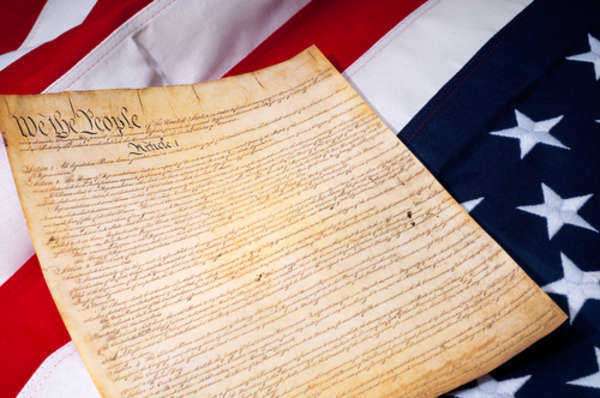Table of Contents

The 25th Amendment: Presidential Succession and State Legal Frameworks
The 25th Amendment to the United States Constitution, ratified in 1967, addresses issues related to presidential succession, disability, and the appointment of a new Vice President. As we navigate the intricate legal landscapes of all 50 states, we explore the profound connection between the 25th Amendment and state laws, shedding light on how this amendment reshaped the mechanisms of governance and continuity in times of presidential transition.
Ensuring Stability in Leadership
The 25th Amendment emerged as a response to the need for a clear and effective process of presidential succession, particularly in cases of presidential incapacity or vacancy. This amendment aimed to establish a systematic approach to addressing situations that could disrupt the nation’s leadership.
Addressing Presidential Disability
The 25th Amendment’s connection to state laws is evident in its provisions for addressing presidential disability. It empowers the President to temporarily transfer powers and duties to the Vice President, a mechanism designed to ensure a seamless transition of authority in situations where the President is unable to discharge their duties.
State-Level Implications
While the 25th Amendment directly addresses the federal executive branch, its connection to state laws lies in the mechanisms for implementing presidential succession and disability provisions. State laws play a role in the coordination and execution of these processes, particularly when it comes to gubernatorial appointments and legislative confirmations of new Vice Presidents.
Gubernatorial Appointments
The amendment’s impact on state laws is particularly relevant when a new Vice President must be appointed. If the Vice Presidency becomes vacant, the President nominates a new Vice President, who must then be confirmed by a majority vote in both houses of Congress. This process indirectly involves state laws governing congressional elections and confirmations.
Legislative Confirmations and State Engagement
State laws play a role in the legislative confirmation process for a new Vice President. This includes considering the balance of power between states, as each state’s representation in Congress influences the outcome of the confirmation vote. State legislatures must be aware of and adhere to their respective legal frameworks for selecting senators.
Contemporary Applications
The 25th Amendment remains a crucial component of the nation’s governance, ensuring continuity and stability in times of presidential transition. As discussions about presidential health, disability, and the role of the Vice President continue to evolve, the amendment’s principles continue to shape the legal landscapes of all 50 states.
Safeguarding Continuity in Governance
The 25th Amendment stands as a testament to the United States’ dedication to maintaining a stable and functioning government. Its connection to state laws underscores the intricate relationship between federal and state governments in ensuring that the mechanisms of presidential succession and disability are efficient, transparent, and constitutionally sound. As we navigate the diverse legal landscapes of all 50 states, we recognize that the 25th Amendment’s impact reverberates through history, shaping the foundations of leadership and governance while upholding the principles of democracy and continuity.
If the President of the United State dies in office, the Vice President will assume the position of the presidency. Although this is the law today, this was not always the case prior to the 25th amendment. In fact, it was never actually clear in the Constitution that the Vice-President takes over for the President. The Vice-President has taken over for the President several times in our history, usually, after the president has been killed or dies of sickness and the first time this happened was when John Tyler, the 10th president, became president after William Henry Harrison died after a month as President. The 25th amendment allows for the Vice President to become president in the event of death, resignation, removal from office, or impairment that prevents the current president from fulfilling his or her duties.
The Vice-presidency had been clearly defined by the 12th amendment as the running mate of the sitting president. As such, there is no risk that a member of the opposing party will gain the presidency in the event of the president being unable to serve his or her duties. Among the more important provisions of the 25th amendment are the provisions for the “Acting President.” During this condition, the Vice-President temporarily assumes the role of the President as it is assumed that the President is unable to fulfill his or her duties at the moment but will be able to in the very near future.
The 25th amendment was adopted by the states in 1967 with Nebraska and Wisconsin being the first states to ratify it and Nevada the 38th and last state needed to have a ¾ majority.
What are the important sections of the 25th amendment?
There are four key sections to the 25th amendment:
Section 1: the process where the Vice President becomes President if the current President dies, resigns, or is removed from office becomes official.
Section 2: if the Vice Presidency becomes vacant, the President may choose a new Vice President, who must be voted and approved by Congress before the candidate can have the position
Section 3: the president may temporarily make the Vice-President the Acting President with a written declaration. This lasts until a second declaration is made that ends this condition. This has been done a few times, most recently when President Bush underwent two medical procedures in 2002 and 2007 and passed power to Vice President Cheney.
Section 4: This is an emergency provision that allows the Vice President and members of the Cabinet to declare the President unfit to carry out the duties of the Presidency. The President may assert his competency (ability to serve) by sending a declaration to Congress. The Vice President and Cabinet can submit another declaration against the President, which would force Congress to reach a 2/3 majority that the President is unfit for office.
Section 4 has never been used, but Sections 1 – 3 have all been used at one time or another.






















